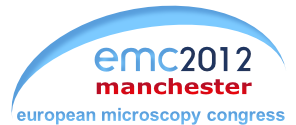
The 15th European Microscopy Congress
Manchester Central, United Kingdom
was held on 16th -





© Royal Microscopical Society 2012
emc2012 was organised by
the Royal Microscopical
Society

RMS Medal for Life Sciences
The RMS Medal for Life Sciences is a new award that will be presented for the first time during emc2012.
It goes to Professor Kurt Anderson of the Beatson Institute.
Further details of the timings of the award will be available nearer the time.
The award celebrates and marks outstanding scientific achievements applying microscopy in the field of cell biology. The award is open to researchers who have run their own research lab for less than 10 years and will be awarded once every two years.
The prize is open to applicants worldwide and will take the form of a certificate and medal.
Professor Anderson's nomination read -
Kurt has been an independent group leader at the Beaton Institute since 2005, during
which time he established a world-
Kurt completed his PhD on actin dynamics in cell migration under Vic Small at the
University of Salzburg, where he set up the live cell imaging systems. He then completed
a short post-
In 2001 he was invited to set up the Light Microscopy Facility in the new Max Planck
Institute for Cell Biology and Genetics in Dresden. There, he built from scratch
a world-
On the basis of his impressive achievements in Dresden, we recruited Kurt to the Beatson Institute for Cancer Research (BICR) in May of 2005. I had become Director of the BICR in 2003 and refocused the strategy to concentrate on research aimed at understanding cell movement, migration and metastasis. Kurt was a key appointment; he assumed responsibility for two groups at the BICR: the Beatson Advanced Imaging Resource (BAIR) and his own independent Tumor Cell Migration lab. This joint appointment placed him at the junction between imaging technology and its application to investigate the molecular basis of disease.
Over the past few years Kurt has been responsible for setting up a world-
In his research, Kurt has pioneered the translation of advanced fluorescence techniques
from cell culture into mouse models of disease. His lab has shown for the first time
that techniques such as FRAP and FLIM-
In recognition of his research achievements, Kurt was promoted to Senior Group Leader with tenure at the BICR, and was made Professor of Cell Migration at the University of Glasgow in September of 2011. The success of Kurt’s contribution to cell biology is amply illustrated by the impressive number of papers in the highest impact factor journals that he has contributed to. Kurt is absolutely indispensable for this work, and is a truly fitting recipient of this prestigious award.
